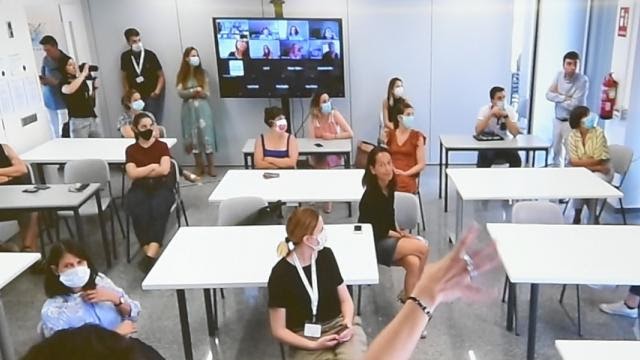Students come from around the world to study at La Salle-Ramon Llull University in Barcelona (La Salle). The university has a long history of innovation with technology at its core — class recordings and remote synchronous lessons have been part of the learning experience for years.
In September 2020, La Salle introduced Smart Learning, a new model of education incorporating Zoom into smart classrooms for hybrid instruction. Zoom Rooms-enabled smart classrooms are designed so students can learn from anywhere — in person or remotely — and receive the same high-quality education as if they were on campus.
Zoom as a long-term solution
Like most of the world, La Salle was forced to react quickly to the COVID-19 pandemic, moving classes online in a matter of days in March 2020.
“At that time, we were using Zoom with faculty and had started using Zoom in classes,” said Josep Maria Ribes, director of academic affairs at La Salle. “When we had to go remote in April and May, we had to do it so quickly that we used another technology.”
As the months went on, the situation remained uncertain. Many students who had gone home during pandemic lockdowns were unable to travel back to La Salle’s Barcelona campus.
With a new academic year coming up, school leaders saw an opportunity not just to adapt to the short-term pandemic situation, but also to introduce Zoom as a long-term solution that would bring greater flexibility and personalization to education.
Building ‘smart classrooms’ with Zoom Rooms
Leading up to the 2020-21 academic year, La Salle deployed Zoom Rooms in more than 60 classrooms on the Barcelona campus, transforming them into smart classrooms designed for connectivity.
“We decided Zoom was the best option because of the easy, intuitive way to use the technology in the classroom,” Ribes said.
Classrooms have an interactive digital whiteboard, screens that display the active speaker and remote students, an active microphone array, and cameras with automatic detection that track faculty members’ movements.
Professors can start a meeting with one touch and share content on the interactive whiteboard with one click. Remote and in-person students can co-annotate on the whiteboard, and professors can save and send content to view later. The hardware helps create a more inclusive hybrid learning environment.


